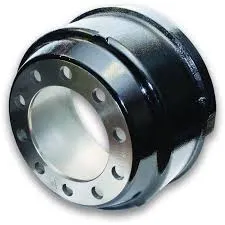
-
 Afrikaans
Afrikaans -
 Albanian
Albanian -
 Amharic
Amharic -
 Arabic
Arabic -
 Armenian
Armenian -
 Azerbaijani
Azerbaijani -
 Basque
Basque -
 Belarusian
Belarusian -
 Bengali
Bengali -
 Bosnian
Bosnian -
 Bulgarian
Bulgarian -
 Catalan
Catalan -
 Cebuano
Cebuano -
 Corsican
Corsican -
 Croatian
Croatian -
 Czech
Czech -
 Danish
Danish -
 Dutch
Dutch -
 English
English -
 Esperanto
Esperanto -
 Estonian
Estonian -
 Finnish
Finnish -
 French
French -
 Frisian
Frisian -
 Galician
Galician -
 Georgian
Georgian -
 German
German -
 Greek
Greek -
 Gujarati
Gujarati -
 Haitian Creole
Haitian Creole -
 hausa
hausa -
 hawaiian
hawaiian -
 Hebrew
Hebrew -
 Hindi
Hindi -
 Miao
Miao -
 Hungarian
Hungarian -
 Icelandic
Icelandic -
 igbo
igbo -
 Indonesian
Indonesian -
 irish
irish -
 Italian
Italian -
 Japanese
Japanese -
 Javanese
Javanese -
 Kannada
Kannada -
 kazakh
kazakh -
 Khmer
Khmer -
 Rwandese
Rwandese -
 Korean
Korean -
 Kurdish
Kurdish -
 Kyrgyz
Kyrgyz -
 Lao
Lao -
 Latin
Latin -
 Latvian
Latvian -
 Lithuanian
Lithuanian -
 Luxembourgish
Luxembourgish -
 Macedonian
Macedonian -
 Malgashi
Malgashi -
 Malay
Malay -
 Malayalam
Malayalam -
 Maltese
Maltese -
 Maori
Maori -
 Marathi
Marathi -
 Mongolian
Mongolian -
 Myanmar
Myanmar -
 Nepali
Nepali -
 Norwegian
Norwegian -
 Norwegian
Norwegian -
 Occitan
Occitan -
 Pashto
Pashto -
 Persian
Persian -
 Polish
Polish -
 Portuguese
Portuguese -
 Punjabi
Punjabi -
 Romanian
Romanian -
 Russian
Russian -
 Samoan
Samoan -
 Scottish Gaelic
Scottish Gaelic -
 Serbian
Serbian -
 Sesotho
Sesotho -
 Shona
Shona -
 Sindhi
Sindhi -
 Sinhala
Sinhala -
 Slovak
Slovak -
 Slovenian
Slovenian -
 Somali
Somali -
 Spanish
Spanish -
 Sundanese
Sundanese -
 Swahili
Swahili -
 Swedish
Swedish -
 Tagalog
Tagalog -
 Tajik
Tajik -
 Tamil
Tamil -
 Tatar
Tatar -
 Telugu
Telugu -
 Thai
Thai -
 Turkish
Turkish -
 Turkmen
Turkmen -
 Ukrainian
Ukrainian -
 Urdu
Urdu -
 Uighur
Uighur -
 Uzbek
Uzbek -
 Vietnamese
Vietnamese -
 Welsh
Welsh -
 Bantu
Bantu -
 Yiddish
Yiddish -
 Yoruba
Yoruba -
 Zulu
Zulu
drum disc brakes
Understanding Drum and Disc Brakes A Comprehensive Overview
Braking systems are crucial for the safety and efficiency of any vehicle, and among the various types available, drum and disc brakes are the most commonly used. Each system has its unique attributes, advantages, and drawbacks that cater to different driving needs.
Drum Brakes The Classic Choice
Drum brakes were first developed in the early 20th century and remain prevalent in many vehicles today, especially in the rear wheels of lighter automobiles. The design consists of a cylindrical drum that rotates with the wheel. Inside, brake shoes press against the drum’s inner surface to create friction and slow down the vehicle.
One significant advantage of drum brakes is their ability to provide strong stopping power. They are often more effective under certain conditions, particularly in situations requiring sustained braking, such as towing. Additionally, drum brakes are generally more affordable to manufacture and maintain, which is why they are still widely used in budget-friendly models.
However, drum brakes do have some downsides. They tend to be less effective when heated, which can lead to brake fade during prolonged use. Furthermore, the enclosed design can trap moisture and debris, potentially leading to rust and wear over time. This makes regular maintenance essential for optimal performance.
drum disc brakes

Disc Brakes The Modern Standard
Disc brakes, on the other hand, have gained popularity since their introduction in the mid-20th century. This system uses a flat disc, or rotor, that spins with the wheel, while calipers with brake pads squeeze the rotor to create stopping power. Disc brakes are commonly found in the front wheels of most modern vehicles and are increasingly used in the rear as well.
One of the primary benefits of disc brakes is their superior heat dissipation. Because they are exposed to the air, they cool more quickly than drum brakes, allowing for consistent performance even during heavy use. Disc brakes also tend to be more effective in wet conditions, as water can easily run off the exposed rotor.
Despite their advantages, disc brakes typically come at a higher manufacturing cost, and they may require more frequent maintenance. Moreover, some users may find that they produce more noise compared to drum brakes.
Conclusion
In essence, the choice between drum and disc brakes often depends on the specific needs of the vehicle and driver. Understanding their respective characteristics can aid in making informed decisions regarding vehicle safety and maintenance, ensuring a smoother and safer driving experience. Whether opting for the traditional drum or the modern disc, both systems play a vital role in automotive engineering.
-
What Are Drum BrakesNewsJul.07,2025
-
Understanding Brake Drum MaterialNewsJul.07,2025
-
Semi-Trailer Brake Drum: A Key Component for Extreme Loads and Long-Distance TransportNewsJul.07,2025
-
Drum Brake Pads for SaleNewsJul.07,2025
-
Brake Drums for SaleNewsJul.07,2025
-
Brake Drum ManufacturerNewsJul.07,2025
-
Aluminum Brake Drums: The Future of High-Performance CarsNewsJul.07,2025
